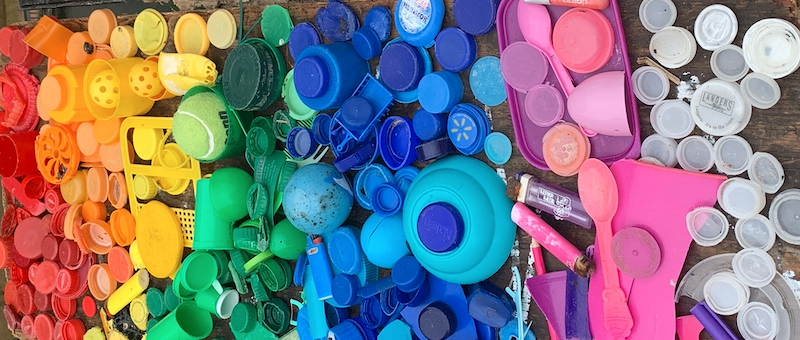This is the sixth in a series of seven blog posts that communicates about climate change through personal stories. Over the course of three months, UCSD student Caitlin Crowe interviewed seven long-term beach goers in San Diego County on their personal connections with climate change effects. In this post we cover harmful algal blooms and changes in water quality.

Water quality and harmful algal bloom changes due to climate change is hard to grasp and predict. While it seems as though less frequent rainfalls could mean less runoff of contaminants into coastal waters, this is not the likely outcome. The reality is that the first rainfall of the rainy season usually creates a more dangerous flush containing the contaminants and pathogens that accumulate throughout coastal watersheds after a long dry spell. Larger, climate change-driven storms also increase risks of sewage spills. Further, rising temperatures throughout coastal watersheds and oceans may fuel harmful algal and pathogen blooms that, combined with the contaminated runoff, would greatly increase risks of disease and toxicity to humans and wildlife through contact with waters and eating fish and shellfish harvested during these conditions.
Like many cities, San Diego’s stormwater flows untreated into coastal waters and are known to contain some amounts of oil, pesticides, fertilizers, pet waste, metals, and pathogens from multiple sources. Stormwater flows, coupled with occasional breaches in the sewage systems, likely contributed to the poor water quality that closed beaches in the county for a total of about 2,000 days since 2006-- and this number is likely to increase. All but one of the long-time beach goers interviewed identified water quality and harmful algal blooms as problems they have faced at their beaches. A couple talked about how water quality had drastically improved since they were children due to increased city clean-up initiatives and infrastructure management. It was even touched on that water quality was not just a matter of decreasing litter and contaminants, but also having proper upstream water management and infrastructure. One beach goer explained “To clean the water is all infrastructure. It’s all ‘where’s the runoff going?’ And, in fact, the city of Long Beach got a grant to help clean up storm drains... We gave that money to the upstream cities...so they could use it... before their water hit the LA River [and flowed] to our beaches.”
Five of the seven beach goers interviewed touched on the fact that water quality is particularly poor right after rain storms and a few admitted to getting sick or getting various infections after not waiting long enough to go back out into the water. Not one of these five, however, mentioned that water quality or algal blooms may become worse with climate change. Although these are two of the least obvious and more complex coastal ocean problems, they are still important climate-related effects that need to be discussed. Besides limiting coastal access, health risks will increase dramatically with worsening water quality and greater frequency of harmful algal blooms, especially for children who are the most susceptible.
Although many beach goers are likely aware of the risks associated with poor water quality and harmful algal blooms, there was a lack of awareness about the day to day causes of these threats, and the likelihood that these problems will only get worse with climate change. Many groups are already working to reduce the causes and impacts of these problems through watershed clean-ups, stormwater awareness efforts, and riparian and coastal wetland restoration. California’s Trash Amendments calls on municipalities around the state to eliminate trash from all waterways. In San Diego, the Regional Municipal Storm Water Permit regulates stormwater throughout the city ensuring flows are as clean as possible. The ‘A Avenue Green Street and Pedestrian Pathway’ project is retaining and filtering runoff before it enters existing storm drain systems in order to sustain long-term water quality improvement. In fact, since its implementation, it has reduced 40% of its pollutant load. The best thing an individual can do to help is to be politically active in calling for stricter regulations regarding trash and contaminant control, and stormwater; and be personally active in watershed clean-up and wetland restoration efforts. You can also support non-profit groups that work for clean waters such as Surfrider Foundation, Coastkeeper, and Heal the Bay.
Resources
Heal the Bay Annual Beach Report Card 2020
California 4th Climate Assessment
San Diego 4th Climate Assessment




